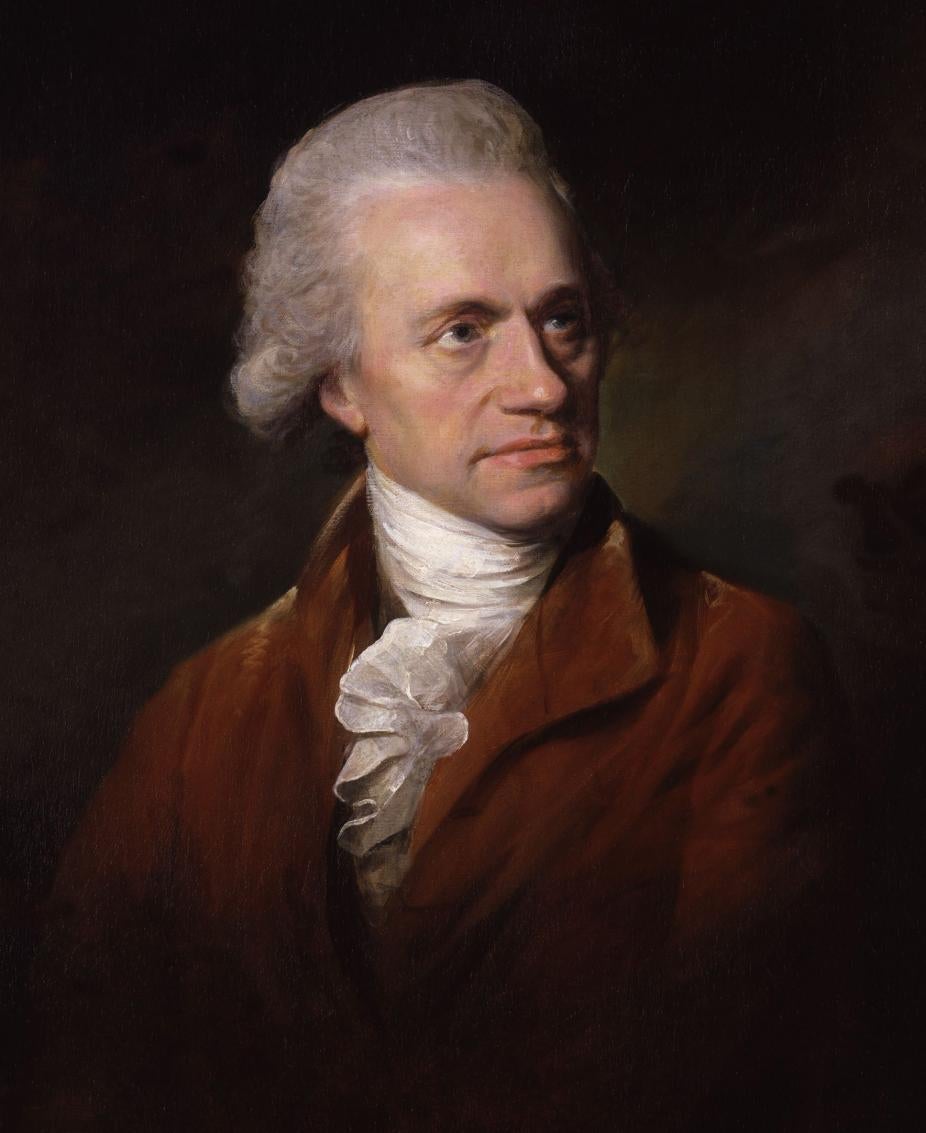Frederick William Herschel (1738–1822)
Sir Frederick William Herschel was born on November 15, 1738 in Hanover, Germany, into a family of musicians. At age 19, he fled to England. With his name anglicized to William, Herschel began earning a living as an organist and later composer and conductor. In 1772 convinced his sister Caroline to join him as an accompanying singer. In their spare time the brother-sister team became engaged in astronomy, in particular in the building of telescopes of ever greater size and magnifying power.

Portrait of Frederick William Herschel.
Wikipedia
Herschel's first major discoveries were to show that Mars and Jupiter exhibit axial rotation. Herschel struck fame in 1781, when he discovered the planet Uranus while engaged in work aimed at determining stellar parallax on March 13. This being the first new planet discovered since antiquity, Herschel, until then a mere amateur astronomer relatively unknown even in England, became a celebrity. Adopting an historically proven strategy, Herschel named the new planet "Georgium Sidum" in honor of the then ruling English monarch George III. The trick worked once again, as King George III gave William and Caroline the titles of "The King's Astronomer" and "Assistant to the King's Astronomer," an honor which came with a life's pension for both.
In 1782 they moved to Bath, and shortly thereafter to Slough, near Windsor, and from this point on William and Caroline could devote themselves entirely to astronomy. The Heschels went on to discover two moons of Uranus in 1787 and two new moons of Saturn.
Herschel's work on double stars, which he pursued intermittently between 1782 and 1821, provided the first demonstration that gravity acted also outside the solar system. He also made one of the first attempts at measuring the Sun's motion through the galaxy via the proper motion of nearby stars. This became yet another step in the removal from the Earth as the center of the Universe.
His increasingly large and powerful telescopes also allowed him to resolve many of the hitherto mysterious "nebulae" into clusters of faint stars. Anticipating in some ways Laplace's model for the formation of the solar system, Herschel developed an evolutionary theory of the universe, where, starting from a uniform "initial state,", stars form and clump into nebulae. While Caroline became increasingly occupied with the search for comets (at which she was quite successful), William became for a time interested in the Sun. Inspired by Wilson's 1774 work, he put forth the theory of sunspots as openings in the Sun's luminous atmosphere, an opinion that was to endure well into the nineteenth century.
In 1800 William became interested in the solar spectrum, and uncovered the first evidence for solar energy output outside of the visible spectrum, in what is now known as the infrared. In 1801 he published two papers that, in part because of Herschel's reputation, effectively launched the field of solar influences on Earth's weather. In the first of these papers Herschel discusses an anti-correlation between the price of wheat and the number of sunspots visible on the Sun.
William died at his home in Slough, near Windsor, on August 25, 1822 and Caroline on September 1, 1848.
Bibliography
Herschel, W. 1801, in Philosphical Transactions of the Royal Society, London, 265 and 354.
Sidgwick, J.B. 1953, William Herschel. Explorer of the Heavens, Faber & Faber, London.
Hoskin, M.A. 1963, William Herschel and the construction of the heavens, Oldbourne, London.